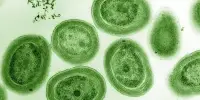A team of researchers from Nagoya University in Japan used a novel combination of technologies to investigate the mechanisms of light-matter interaction in nanomaterials at the smallest and fastest scales.
Nanomaterials, or materials with nanoscale dimensions ranging from 1 to 100 nm, are becoming increasingly important in industry and daily life. Because of their extremely small size, they have unique properties that are not found in larger materials. These properties are also unique to the material’s nature and environment. To increase the number of nanomaterials that can be used effectively, safely, and sustainably in products and manufacturing processes, we need a better understanding of even the smallest events that occur on and inside nanoparticles.
If you’ve ever seen water freeze to ice, you’ve seen a “phase transition,” as physicists call it. Scientists at Osaka Metropolitan University have discovered an unprecedented phase transition in which crystals acquire amorphous properties while retaining their crystalline properties. Their findings aid in the development of hybrid materials for use in harsh environments such as space. Physical Review B published the findings.
In the dielectric compound Ba1-xSrxAl2O4, the structural phase transition is driven by an acoustic soft mode, the atomic vibration pattern of which is similar to that of sound waves. The compound comprises an AlO4 tetrahedral network and Ba/Sr atoms.
Professor Yui Ishii
A typical crystalline solid phase transition involves a change in crystal structure. Such structural phase transitions are typically observed at fixed temperatures. Controlling the chemical composition of the crystal, on the other hand, can lower the transition temperature to absolute zero (−273°C). The structural quantum critical point is the transition point at absolute zero.
In the dielectric compound Ba1-xSrxAl2O4, the structural phase transition is driven by an acoustic soft mode, the atomic vibration pattern of which is similar to that of sound waves. The compound comprises an AlO4 tetrahedral network and Ba/Sr atoms.
The research team led by Associate Professor Yui Ishii from the Graduate School of Engineering at Osaka Metropolitan University has discovered that a highly disordered atomic arrangement is formed in the AlO4 network at chemical compositions near the structural quantum critical point, resulting in both characteristics of crystalline and amorphous materials.

Ba1-xSrxAl2O4 is a crystalline solid. However, the researchers found that at higher Sr concentrations than the structural quantum critical point, Ba1-xSrxAl2O4 exhibits the thermal characteristic of amorphous materials, i.e., low thermal conductivity comparable to that of glass materials (e.g., silica glass). They observed that a part of the atomic structure loses periodicity because of the incoherently stopped acoustic soft mode. As a result, a combination of a glassy Al-O network and a periodic Ba arrangement is realized.
This hybrid state, which the research team was the first to discover, is easily created by uniformly mixing raw materials and heating them.
Nanometrology is a subfield of metrology that scientists use to measure nanomaterials. Nanometrology is the measurement of length scales at the nanoscale. To put this into perspective, a human hair is approximately 100,000 times wider. Scientists must measure events that occur in fractions of a second when particles are this small. A phenomenon known as photoexcitation, for example, occurs in picoseconds, or one trillionth of a second. To measure these almost instantaneous events, specialized devices are required.
Professor Ishii ended by saying, “In theory, the phenomenon discovered in this study can occur in materials with acoustic soft modes. Using this technique on different materials could lead to the development of hybrid materials that combine the physical properties of crystals, such as optical properties and electrical conductivity, with the low thermal conductivity of amorphous materials. Furthermore, the high heat resistance of crystals can be used to create insulation materials for use in harsh environments such as outer space.”
















